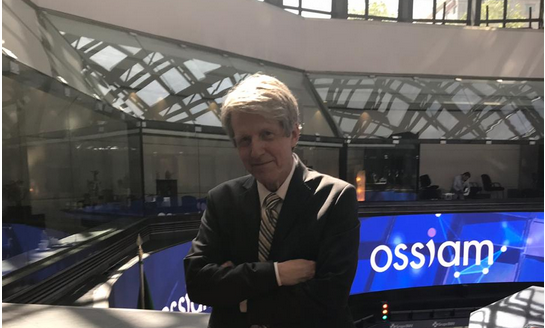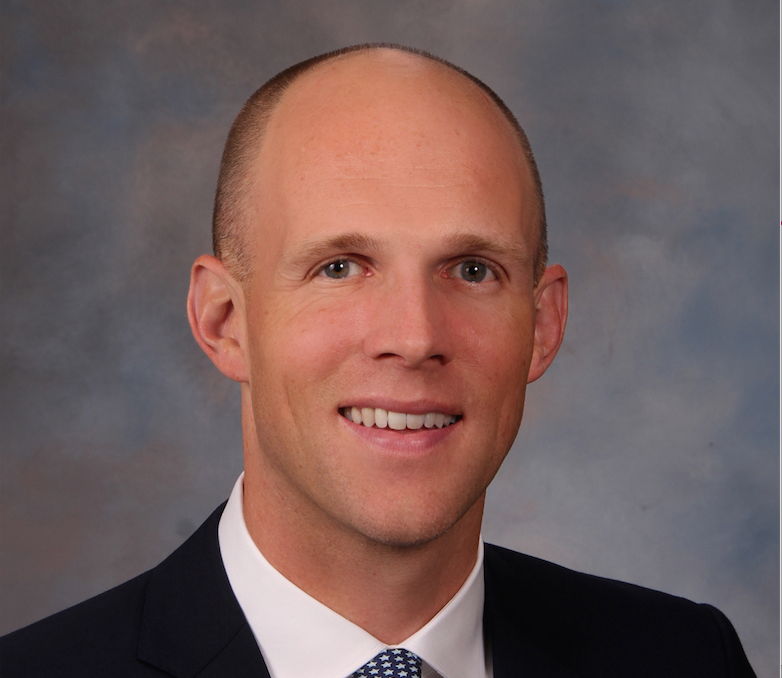“Argentina will Continue to be a High-Risk Country, but at Levels that Exceed the Reasonable Possibilities of Default”
| For Fórmate a Fondo | 0 Comentarios

In an exclusive interview with Gorky Urquieta, Global Co-Head of Emerging Market Debt Neuberger Berman, Funds Society has had the opportunity to talk about their current vision and perspectives of emerging markets debt after the instability experienced in these markets during last August.
The current situation of emerging markets is different from that of 2013 or 2015 Neuberger Berman’s assessment of the current situation of emerging markets differs significantly from what happened in 2013 or 2015, when emerging markets experienced significant spread extensions and currency falls. Although they admit that there is a certain deceleration stage, and that some countries will have to make more aggressive adjustments in monetary policy, they also point out that there are others that are in relatively good conditions despite a more complicated current environment. In particular, Urquieta points out that: “There are countries that are in relatively good conditions in Latin America, countries such as Mexico and Colombia, and even Brazil, which is recovering from a hard recession, but there are vulnerabilities that have become more evident in recent times due to the rate hike, the expectation of rising US Treasury rates and the revaluation of the dollar that has complicated refinancing prospects, access to liquidity, and financial conditions for markets in general.”
Main risks: trade conflict and rate hikes in the United States
At Neuberger Berman, they believe that one of the reasons for the adjustment of emerging markets has to do with the uncertainty with respect to “trade,” not only the trade dispute between China and the United States, but also with regard to the uncertainty generated before an agreement was reached in NAFTA. Urquieta concludes: “In general, this whole protectionist attitude in the US is clearly not prone to lead to growth in world trade and that will affect emerging markets to a greater or lesser degree.”
In particular, and with respect to the trade conflict between China and the United States, he acknowledges that there is a risk factor as to how it will affect the Chinese economy’s demand for raw materials, although he states that it’s in a very good position to react on the side of monetary and fiscal policy favored by low pressure for the devaluation of the renminbi.
However, he acknowledges that part of this risk in emerging debt assets has already been priced in: “It’s possibly the only risk asset which has put some price on that conflict, via commodities.” Despite this, he explains that Asian currencies that may be more exposed, such as, for example, the Korean Yuan or the Taiwanese dollar, have not been so affected, thanks to their good fundamentals.
When asked about another of the major risks that concern investors, the rate hike by the Fed, Urquieta says that some of these are already priced in and justify the appreciation of the dollar with respect to its base. However, he does not expect rates to rise more than twice, due to his doubts about the ability of the American economy to maintain its current growth rate, which is close to 4%, and adds: “As we approach 2019, growth expectations will probably begin to cool down a bit and we think that the FED will not end up raising rates 3 or 4 times.”
Opportunities in Latin America: Brazil, Argentina, and Mexico
After strong corrections in the markets, there are usually purchase opportunities due to the indiscriminate sale of assets that occurs in situations of uncertainty. Urquieta explains: “In times of stress, the market starts to act without differentiating; and we saw that in August, when the lira collapsed and the Argentine peso fared worse than the lira. That example indicates that when we see that kind of reaction it means that the market is capitulating, that is to say that it has reached a point that does not distinguish, and that indiscriminate fall creates many opportunities “
As regards their interest in debt markets in foreign currency and local markets, Brazil is a country that attracts them greatly. While it is true that local rates and the real have suffered a lot of pressure due to political uncertainty, there will potentially be a point of entry that has not yet been defined, but which will be after the first round of elections.
Argentine debt assets in foreign currency are a type of asset that also seems interesting, despite all the uncertainty surrounding the country, and he explains why: “Its market price, with the current spreads, as far as regards the probability of default, seems a bit excessive. But it‘s still a high risk country, which will probably continue to be high risk for a while, but it’s already at levels that exceed reasonable possibilities of default.”
Going into greater detail concerning the Argentine political issue, they agree that it’s complicated, but they also believe that Macri still has a relatively stable level of support, at around 40%, and that necessary adjustment plans for 2019 will be approved. They do not believe that there is any significant risk of government collapse and he adds: “Conditions would have to deteriorate greatly, a break with the fund, the program aborted for some reason, there would have to be a very extraordinary event outside of Argentina.”
“On the part of the markets we may have seen the worst,” Urquieta adds regarding the Argentine markets, although he acknowledges that the Argentine economy will suffer a severe adjustment and will be in negative growth for a long time. As for the Argentine peso, he believes that its fall is beginning to be under control, mainly because the domestic market begins to have more confidence and he adds: “That will follow a course and will eventually turn into a virtuous cycle, after having been a vicious cycle, where the outflow of capital, and the more aggressive sale of pesos to buy dollars has created a vicious circle. The stability of the exchange rate is a requirement for the rest to begin to recompose.”
Finally, he adds that, in their opinion, Mexico is another market to be taken into account, as it is a highly rated segment that seems interesting on the side of the handles and debt in foreign currency.
Portfolio recommendations
Given the current market environment and the variety of strategies that Neuberger Berman offers, we asked Gorky Urquieta about his investment recommendations and he presents the following 3 alternatives based on the risk profile.
On the more conservative side, he talks about short duration which is a fairly conservative strategy within emerging markets due to the duration profile, its foreign exchange risk, being exclusively foreign currency, and the credit quality of its portfolio with an average investment grade of BBB- . He also adds that, due to the pressure that has been observed in the short part of the curves of emerging markets during the month of August, the YTD (yield to maturity) was expanded by 100 basis points to stand above 5.8% , and thanks to this it is quite possible that they exceed the return target set at 3% over cash (3 month treasury rates).
On the opposite side, are the strategies in local currency and he adds: “If things recover, it is the strategy that has the most upside.” He also explains that based on their own analyses, following market falls exceeding 10 %, there will frequently be a rebound in prices in the following one to three months, and he confirms that the market has fallen 10% since February’s highs.
In between both strategies, there’s debt in foreign currency. Urquieta adds that although it‘s true that the spread of the benchmark has expanded 100 basis points since the beginning of the year to levels of 375 basis points, it’s mainly due to the component with credit rating below investment grade, which represents 49% of the benchmark , and whose spreads have expanded between 175-180 basis points, and half of this movement has occurred in August.
Gorky Urquieta joined Neuberger Berman in 2013. He is currently a Senior Portfolio Manager and Co-Head of the Emerging Markets Debt team, responsible for the management of numerous strategies including the following: Hard Currency, Local Currency, Corporate Debt, Short Duration, Blend, Blend Investment Grade, Asian Hard Currency, and China Bond Fund, with assets under management totaling 18 billion USD.
Founded in 1939, Neuberger Berman is a privately owned, 100% independent company. It has offices in 32 cities around the world, assets under management of approximately 304 billion dollars, and more than 40 UCITS funds registered in Ireland. With over 500 professional investors and approximately 2,0000 employees in total, Neuberger Berman stands out for its extensive offer in equities, fixed income and alternative products.




